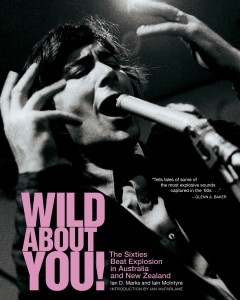-
Featured News
The MC5: A Eulogy
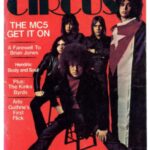 By Doug Sheppard
And then there were none. Five equals zero. The morning of May 9, 2024, the last surviving member of the MC5, drummer Dennis Thompson, died while recovering from a heart attack—
By Doug Sheppard
And then there were none. Five equals zero. The morning of May 9, 2024, the last surviving member of the MC5, drummer Dennis Thompson, died while recovering from a heart attack— -
Featured Articles
The Beatles: Their Hollywood and Los Angeles Connection
 By Harvey Kubernik
JUST RELEASED are two new installments of the Beatles’ recorded history, revised editions of two compilation albums often seen as the definitive introduction to their work.
Or
By Harvey Kubernik
JUST RELEASED are two new installments of the Beatles’ recorded history, revised editions of two compilation albums often seen as the definitive introduction to their work.
Or -
Bill Haley: Crazy Man, Crazy!
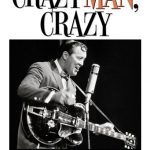
Book review by Bill Shute
CRAZY MAN CRAZY: THE BILL HALEY STORY by Bill Haley Jr & Peter Benjaminson (Omnibus Press UK/Backbeat Books US; 2019; 299 pages)
In 1990, Bill Haley’s son John co-wrote a now-rare book, Sound And Glory, which many consider the go-to source for Haley’s work up through the early ‘60s and his move to Mexico. Now, another of Haley’s sons, Bill Jr, has co-written a new biography, Crazy Man Crazy, which balances Haley’s music and his personal life. It has the benefit of the detailed insights from Haley’s first two wives, Dorothy (who was there for the years of struggle, when Bill was a regional artist and working on his fusion of country boogie/R&B in local bars and on local Philly labels), and Cuppy (who was there during Bill’s breakthrough in the founding days of rock & roll through his biggest fame until things crashed circa 1959 and he left the country), and Haley fans will thrill at the wealth of detail and specifics about the early tours and television appearances and band dynamics and business problems and the like. It’s as if you are there as “Crazy Man Crazy” flies up the charts in 1953, and audiences and radio programmers are trying to figure out what this curious musical hybrid Haley calls rock’n’roll is about—and as “Rock Around The Clock” is featured in the film Blackboard Jungle, months after its original release and modest reception (it wasn’t even the A-side of the single!), and Haley and his Comets become superstars, for a time at least.
Bill Haley had a passion to become a famous music personality and an equal passion to create a new form of music, combining the elements of the many American musical forms he loved, from gospel to polka (the early Comets had an accordion) to jazz to honky tonk (the Comets had a steel guitar), though especially country boogie and R&B. Haley tried various approaches, but hit the right combination in 1951 with his cover of “Rocket 88” and mastered the newly created form with his 1953 hit “Crazy Man Crazy.” This book puts you alongside Bill during those agonizing early days as things are coming together.
Unfortunately, you are also right beside Bill as things fall apart in the late ‘50s, mostly due to mismanagement and Bill’s loyalty to friends from the neighborhood who were in way over their heads in business affairs. Also, Bill was not a model father or model husband with his first two marriages, and the picture emerges of a solitary man with a pleasant and friendly public image who lived for music, but found life and family more difficult to master. Fortunately, his third marriage, to Martha, whom he met in Mexico, proved more successful, but by the late ‘60s, when he’d moved to South Texas and began working in the US again (his tax problems resolved), his drinking problem had taken its toll.
Crazy Man Crazy is not a happy read (with Haley’s inconsiderate behavior toward family members and the man’s own sad run of bad luck), but it’s inspiring in a way to see Haley soldier on decade after decade, often in reduced form, excitedly representing pure ‘50s rock and roll during periods where few cared. The book is a compelling read and will surely become the standard biography of one of the key architects of rock & roll. (Bill Shute)
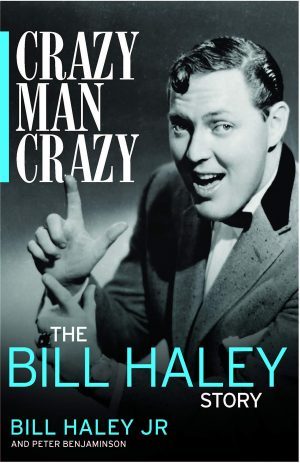
The Best of 2014 — according to a bunch of Ugly Things writers
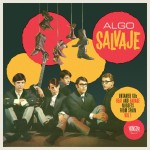
As the year drew to its close, we asked our writers to submit a list of their personal favorite reissues and such for 2014. Against all odds, some of them managed to fight through the fog and fug of the holidays and complete the assignment. Here’s what they came up with…
Mike Stax (Editor)
Favorite single artist reissues:
The Bonniwell Music Machine – S/T (Big Beat) 2-CD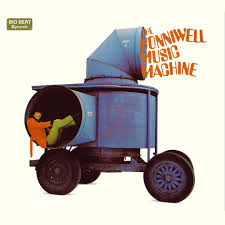
The definitive collection of the second-phase Music Machine. The Bonniwell Music Machine album expanded to include all of the contemporaneous non-LP singles, along with a trove of demos, outtakes and alternate mixes. Expertly compiled and annotated by Alec Palao, who also was responsible for…
The Seeds – Singles A’s & B’s 1965-1970 (Big Beat/GNP-Crescendo) CD
Big Beat’s comprehensive reissue series of the Seeds’ catalog concludes with this great collection of all of the band’s singles, from 1965’s plaintive “Can’t See to Make You Mine” to 1970’s gut-wrenching “Did He Die.” Alec Palao’s detailed liner notes spanning this entire series also serve as the ultimate Seeds biography, shining light on every facet of their story, including special attention to all of their recording sessions.

We the People/American Zoo – Visions of Time (Guerssen, Spain) LP/CD/DL
Not to be confused with the well-known Florida band, this edition of We the People were based in LA and released a handful of singles under that name and as American Zoo. We the People/American Zoo resided in that shadow-shrouded corner of the ‘60s garage band universe where brooding teenagers spent long, solitary hours listening to Byrds and Bob Dylan records and were duly moved to write somber, soul-searching minor key songs with titles like “Feelings of My Emptiness,” “Back Street Thoughts” and “Who Am I?” It’s an intoxicating recipe when it’s done right, and American Zoo did it right. A class package from the Guerssen label including informative liners by Gray Newell.
WILD ABOUT YOU!
WILD ABOUT YOU! The Sixties Beat Explosion in Australia and New Zealand by Ian D Marks and Ian McIntyre (Verse Chorus Press, US; 2010; 352 pages)
For decades I was fascinated by, but short on information about, the ephemeral Australian band the Black Diamonds, ever since I somehow snagged a copy of their mind-boggling, double-sided classic 45, “See the Way”/”I Want, Need, Love You” in an auction. Then last year I stumbled on a bootleg DVD containing actual videos of both songs, set amid crashing waves. And now there’s an entire chapter on the small-town New South Wales band in this gem of a book. (Now if I could get hold of the Diamonds’ second single…)
The book’s subtitle pinpoints its subject matter, which it surveys in 35 chapters on 35 bands. First-hand recollections from band members are the rule, with expert authorial interjections to provide context, so you get not only a musical chronicle but a cultural immersion—even more valuable for readers who didn’t grow up in ’60s Oz or NZ and know little about the youth cults, official harassment, and showbiz exploitation that challenged the bands.
Not every antipodean ’60s band of note is covered; omissions, such as Larry’s Rebels or MPD Ltd, lean a little toward the pop side. A few of the acts in the book achieved homeland pop success—the Easybeats, the Twilights, the Masters Apprentices, Ray Columbus. But most of the others—the Throb, the Bitter Lemons, the Mystrys, and the Others themselves—struggled briefly, left a record or two, and dissolved.
This handsome paperback, replete with terrific photos, discographies, and listings for anthologies containing the records discussed, makes a fitting memorial for these undersung heroes and is indispensable for anyone with an interest in one of the planet’s most exciting ’60s scenes. (Ken Barnes)
From UGLY THINGS #32 (Fall/Winter 2011)
